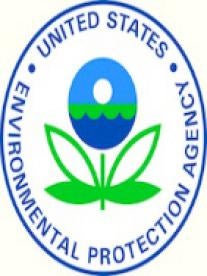The regulation requires power plants and manufacturing facilities to demonstrate that their cooling water withdrawals minimize fish mortality.
The U.S. Environmental Protection Agency (EPA) has issued regulations under section 316(b) of the Clean Water Act establishing standards to be met by existing power plants and manufacturing facilities to minimize the loss of aquatic organisms that are drawn into their cooling water intake structures. The regulations, issued on May 19, require existing large power plants and manufacturing facilities that withdraw water for cooling from a water body subject to EPA’s jurisdiction to demonstrate that they use the best technology available to limit the number of aquatic organisms that are killed when they are pinned against the facility’s intake structure (i.e., impinged) or that are drawn into the facility’s cooling system (i.e., entrained).
For existing facilities, these section 316(b) demonstrations must be made as part of a facility’s application to renew its National Pollutant Discharge Elimination System (NPDES) permit. The renewed NPDES permit would include conditions to ensure compliance with the new section 316(b) standards, which apply to existing power plants and manufacturing facilities that have the capacity to withdraw at least 2 million gallons of water per day and use at least 25% of the water that they withdraw exclusively for cooling. These covered facilities must meet standards for impingement, mortality, and entrainment.
EPA developed the new regulations pursuant to section 316(b) of the Clean Water Act, which requires EPA to set standards such that “the location, design, construction, and capacity of cooling water intake structures reflect the best technology available for minimizing adverse environmental impact.” EPA views impingement and entrainment to be the adverse environmental impacts associated with cooling water intake structures. The new regulations require covered facilities to use one of seven alternatives to demonstrate that their cooling water intake structures meet the best technology available standard for minimizing impingement mortality.
These seven alternatives are as follows:
-
A closed-cycle system
-
A cooling water intake structure with a maximum design velocity of 0.5 feet per second
-
A cooling water intake structure operated at a velocity of 0.5 feet per second or less
-
An offshore velocity cap
-
A modified traveling screen that meets the regulation’s requirements and that the permit writer determines is the best technology available for impingement reduction
-
A combination of technologies, measures, and practices operated in a way that the permit writer determines is the best technology available for minimizing impingement
-
An impingement mortality standard achieved of no greater than 24%
The information the regulations require to be submitted by facilities will differ depending on which of the seven alternatives the facility chooses to implement. Generally, less engineering data and fewer biological studies is required to support selection of one of the first two technology options than is necessary to support an alternative that relies on operational practices or a combination of technologies and operations. Each facility is required to meet the impingement mortality standard as soon as practicable following the issuance of a NPDES permit that establishes the entrainment requirements under the new regulations.
The new regulations do not establish a single performance standard or specific technology for minimizing entrainment. Rather, the NPDES permit writer is required to establish an entrainment standard on a site-specific basis for each facility after considering factors specified in the regulations. Those facilities that withdraw more than 125 million gallons of water for cooling per day must also develop and submit an entrainment characterization study.
The demonstration materials required to establish compliance with the new regulations must be submitted with the facility’s application to renew its NPDES permit. The new regulations provide that a permit writer considering an application to renew a NPDES permit submitted before the effective date of the rule must establish interim requirements for what is deemed the best technology available to minimize adverse environmental impacts based on its best professional judgment. EPA’s discussion of the new regulations, however, indicates that a permit writer considering such a renewal application should consider whether additional, updated information would support the permit decision and may request additional information, including information that would be required in a renewal application submitted pursuant to the new regulations. If the facility’s current NPDES permit expires earlier than 45 months after the new regulation’s effective date, then the facility may request an extension to submit the required information. The new regulations are effective 60 days after their publication in the Federal Register, which is expected to occur soon.
The new regulations contain many complexities that subject facilities will need to consider, such as the interaction of the 316(b) standards with safety requirements applicable to nuclear facilities, differentiating between fragile and nonfragile species in impingement mortality demonstrations, peer review necessary for supporting entrainment studies, and the application of the closed-cycle recirculation system standards to facilities that use impoundments for cooling water. The new regulations also establish requirements for new facilities constructed on the sites of existing facilities. Overall, the compliance approach taken by a facility may significantly affect the associated data requirements for satisfying the rule.




 i
i

